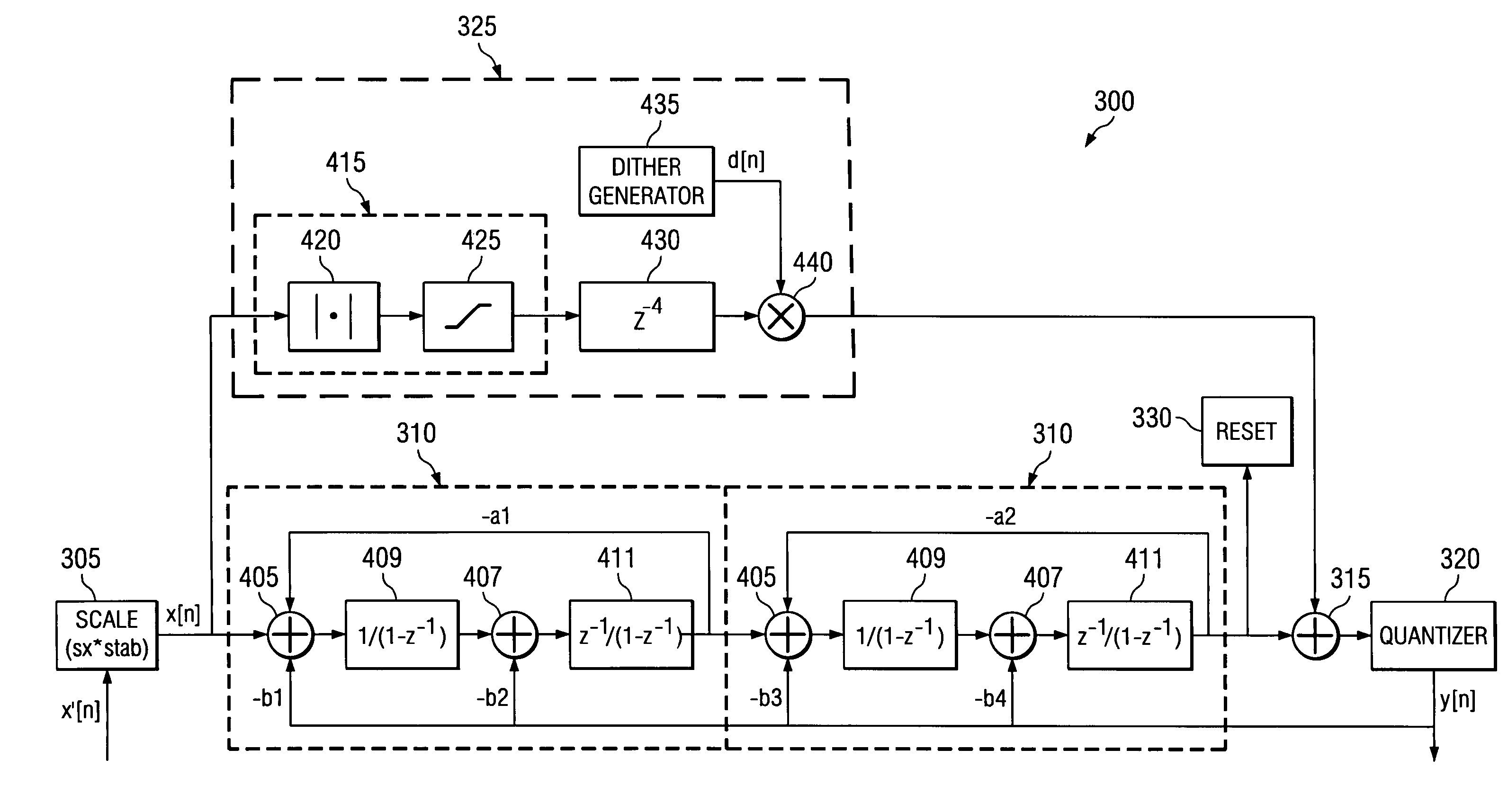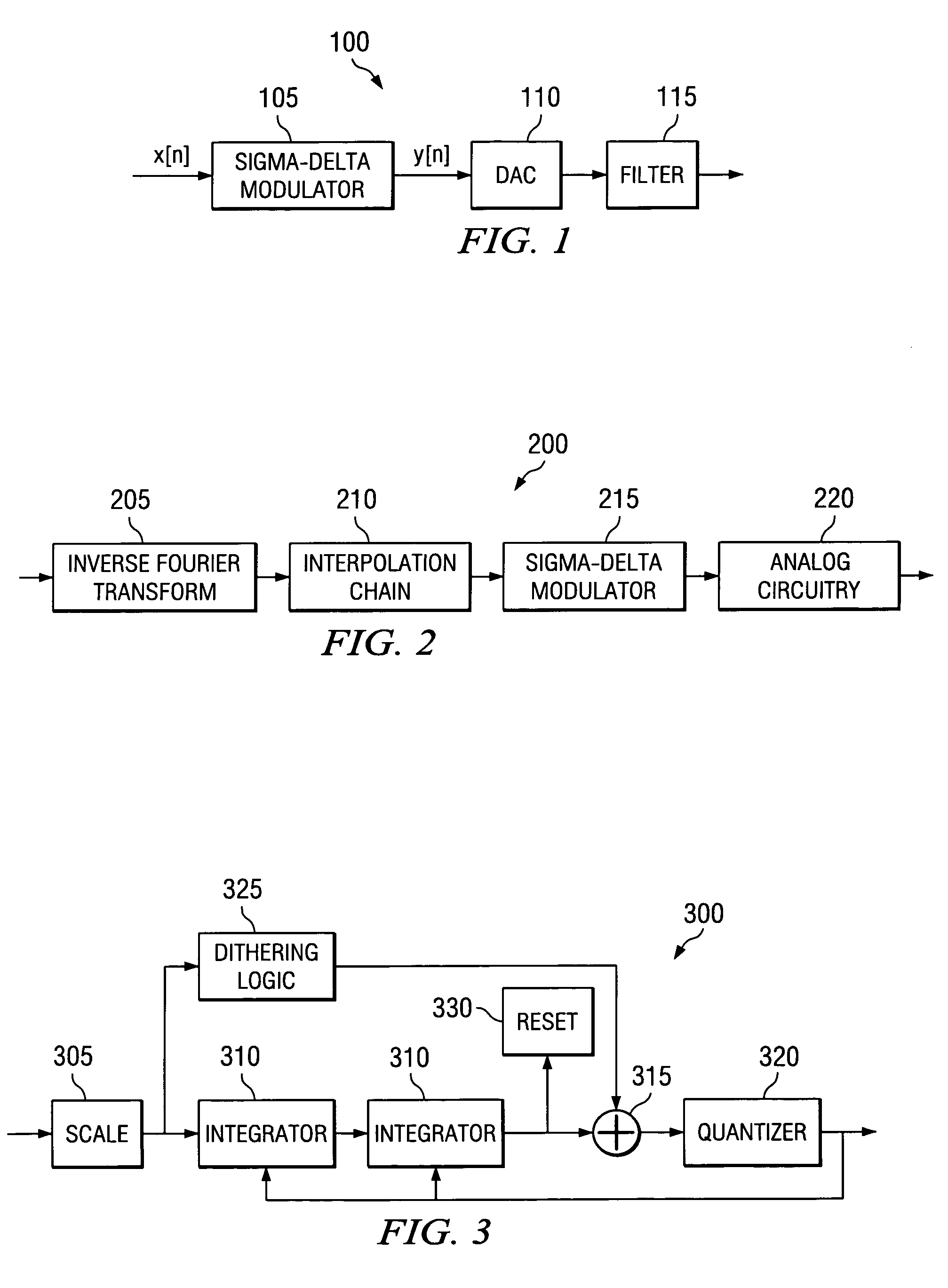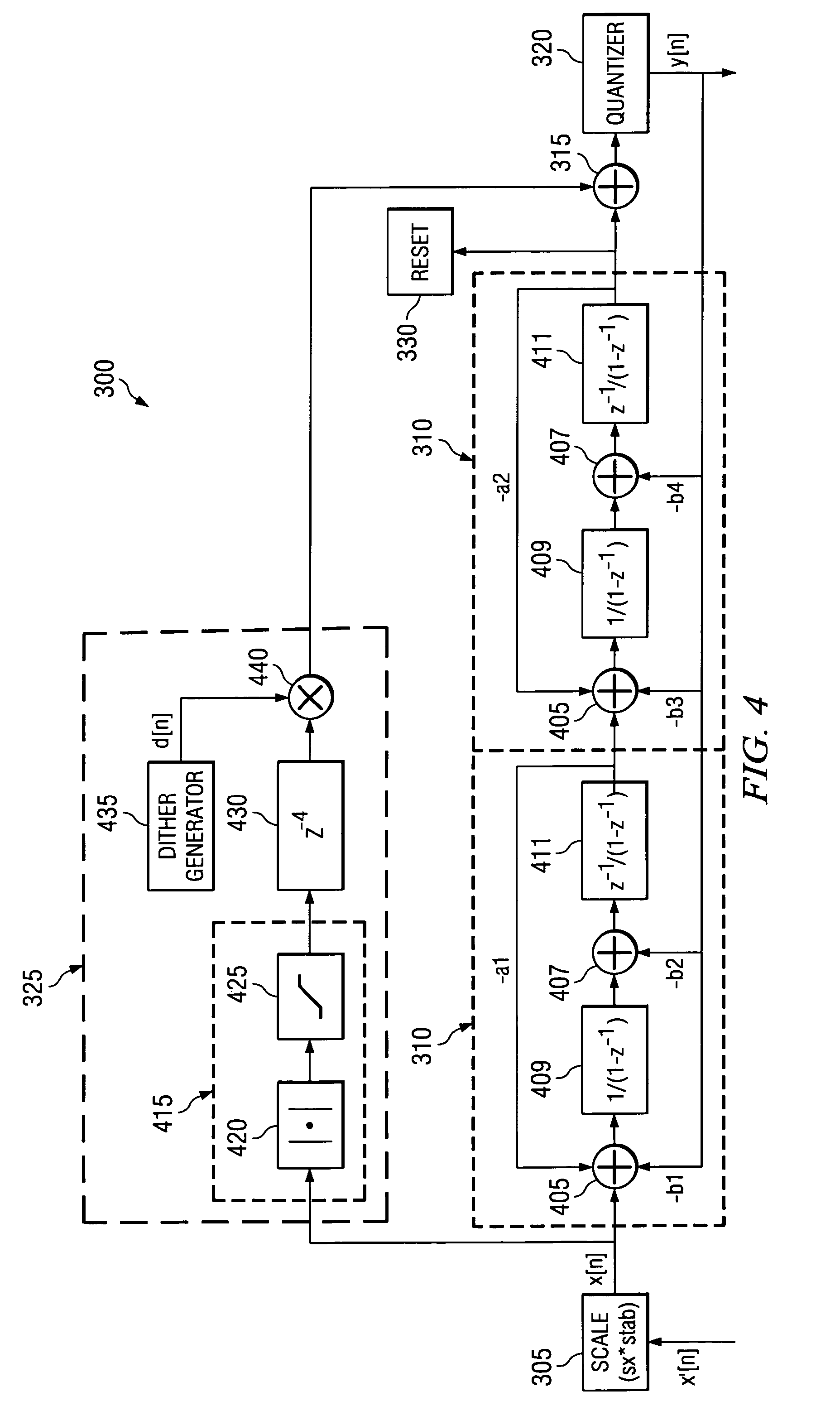Method and circuit for multi-standard sigma-delta modulator
a multi-standard, sigma-delta technology, applied in the field of digital communication systems, can solve the problems of not being able to operate at sufficient frequencies, being difficult to design, and using a single bit output line can require the use of a sigma-delta modulator, etc., to achieve good compromise, reduce operating frequency, and increase the stability range of sigma-delta modulators
- Summary
- Abstract
- Description
- Claims
- Application Information
AI Technical Summary
Benefits of technology
Problems solved by technology
Method used
Image
Examples
Embodiment Construction
[0029]The making and using of the presently preferred embodiments are discussed in detail below. It should be appreciated, however, that the present invention provides many applicable inventive concepts that can be embodied in a wide variety of specific contexts. The specific embodiments discussed are merely illustrative of specific ways to make and use the invention, and do not limit the scope of the invention.
[0030]The present invention will be described with respect to preferred embodiments in a specific context, namely a communications system that is adherent to several of the asymmetric digital subscriber line (ADSL) technical specifications, such as G.lite, ADSL, and ADSL+. The ADSL technical specifications can be found in a document entitled “International Telecommunication Union-ITU-T G.992.1-Series G: Transmission Systems and Media, Digital Systems and Networks, Digital Transmission Systems-Digital Sections and Digital Line System-Access Networks-Asymmetric Digital Subscrib...
PUM
 Login to View More
Login to View More Abstract
Description
Claims
Application Information
 Login to View More
Login to View More - R&D
- Intellectual Property
- Life Sciences
- Materials
- Tech Scout
- Unparalleled Data Quality
- Higher Quality Content
- 60% Fewer Hallucinations
Browse by: Latest US Patents, China's latest patents, Technical Efficacy Thesaurus, Application Domain, Technology Topic, Popular Technical Reports.
© 2025 PatSnap. All rights reserved.Legal|Privacy policy|Modern Slavery Act Transparency Statement|Sitemap|About US| Contact US: help@patsnap.com



